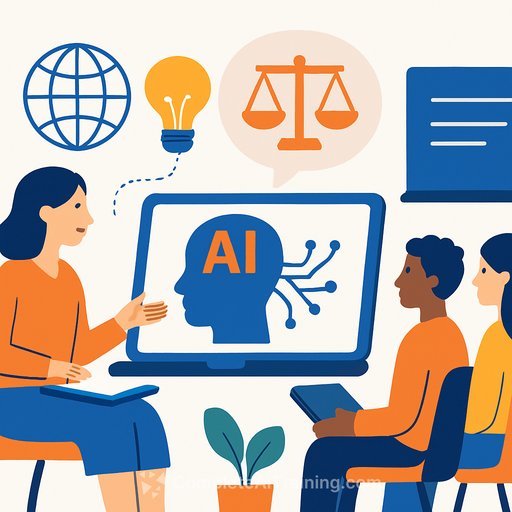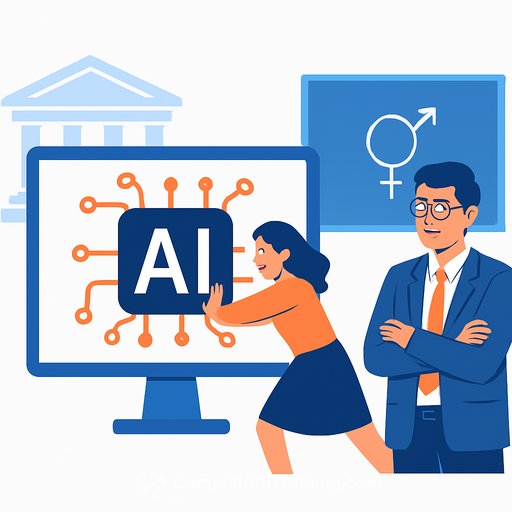Brains, Bots, and the Battle for Creativity: What AI Means for Higher Education Now
AI is in the study routine of most college students. A September 2025 Copyleaks study reports nearly 90% of students use AI for academic work, and over half use it weekly. Faculty adoption lags in depth: 61% have used AI in teaching, yet most use is minimal to moderate.
At MidwestCon 2025, hosted at the University of Cincinnati's 1819 Innovation Hub, education and industry leaders shared how to respond. The consensus: AI changes how students get answers, so we must change how we teach and assess learning.
The core issue: answers vs. learning
Generative AI compresses the time between question and answer. As James Francis of Artificial Integrity put it, instant information can be mistaken for actual learning. The difference is the "why" behind the answer.
Learning requires evaluation, judgment, revision, explanation, and attribution. Those steps vanish when students copy outputs. If we skip them, we weaken the very skills higher education is supposed to build.
Rethinking assessment
Product-only grading (essays, problem sets, timed exams) is easy for AI to short-circuit. Shift your assessment to the process that leads to the outcome. Make students show their thinking, not just the final artifact.
- Presentations with Q&A on decisions and trade-offs
- Student-teacher conversations or oral exams
- Formal debates on sources, claims, and counterclaims
- Ideation walkthroughs that document prompts, iterations, and revisions
These methods make soft skills visible: communication, adaptability, flexibility, critical thinking, problem-solving, and connecting ideas. As AI takes on routine tasks, these skills will define employability.
The AI literacy gap
Students are using AI without understanding it. A 2024 Digital Education Council report found 58% feel they lack AI knowledge, 48% feel unprepared for AI-driven work, and 80% say their institution's integration is insufficient.
As Francis warned, many students paste AI outputs straight into assignments. They miss the learning process-and the answer might be wrong. That's a literacy problem, not a moral failure.
A better use: AI as a sparring partner
University of Cincinnati leadership emphasizes AI for idea generation and personalized support, not as an instant-answer machine. The mindset: iterate with AI, verify claims, and explain your rationale.
Brand strategist Jeneba Wint notes AI can widen perspective if students question it. Faculty should model that curiosity and push students beyond AI's tendency to flatter or agree (sycophancy bias). As one panelist framed it: the responsibility sits with the teacher; the accountability sits with the student.
Guardrails that matter
- Define acceptable AI use per assignment (prohibited, limited, or encouraged-with conditions).
- Require disclosure and attribution of AI assistance, including prompts and key iterations.
- Grade process: have students justify choices, compare alternatives, and reflect on trade-offs.
- Build source checks into rubrics: verify claims, cite credible evidence, and flag hallucinations.
- Run bias checks: ask students to test for missing perspectives and document mitigation steps.
- Use oral defenses or spot-checks to validate authorship and depth of understanding.
What leading campuses are doing
Forward-leaning institutions have cross-functional task forces establishing practical policies, assessment models, and training. UC's approach: faculty development, student literacy, and iterative pilots instead of blanket bans.
The takeaway from MidwestCon: keep experimenting. Evolve your pedagogy, or the change will happen without you.
Practical checklist for your next term
- Update syllabi with clear AI use policies and assignment-level guidance.
- Convert at least 30% of course grading to process-based assessments.
- Add AI disclosure sections to major assignments (prompts, tools, iterations, verification).
- Introduce a 90-minute AI literacy module: prompts, verification, bias, and citation.
- Pilot oral defenses for capstones or key projects.
- Adopt a standard bias-and-fact checklist students must complete before submission.
- Invest in faculty workshops on AI pedagogy and assessment redesign.
- Engage employer partners to align soft-skill rubrics with hiring expectations.
Key risks-and how to mitigate them
- Overreliance: Require independent reasoning steps and non-AI source validation.
- Bias and values: Teach students to question training data, identify omissions, and ground claims in context.
- Quality drift: Use calibration assignments to compare AI-supported and independent work.
- Academic integrity: Combine process artifacts, oral checks, and transparent AI disclosures.
AI can broaden perspective and speed iteration. Its value depends on how we teach students to question, verify, and explain. Build courses that reward thinking, not shortcuts.
Need ready-to-use training resources? Explore curated AI courses for educators and academic teams at Complete AI Training - Courses by Job or see the latest programs at Latest AI Courses.
Your membership also unlocks:






